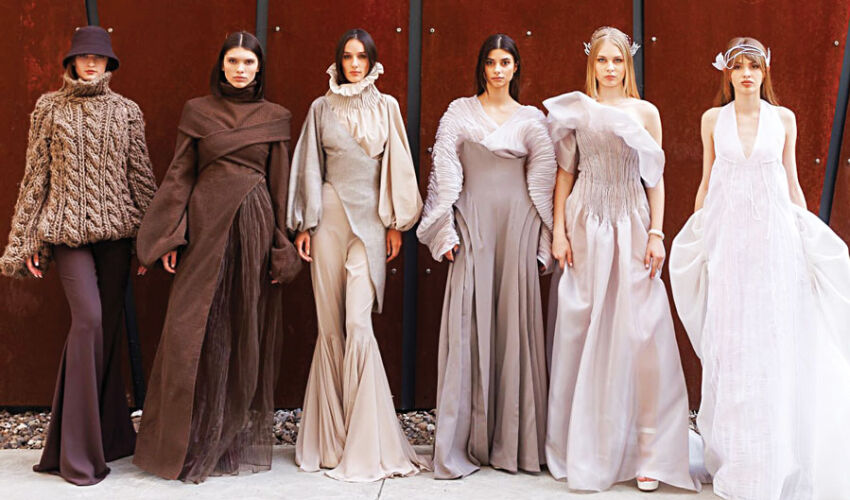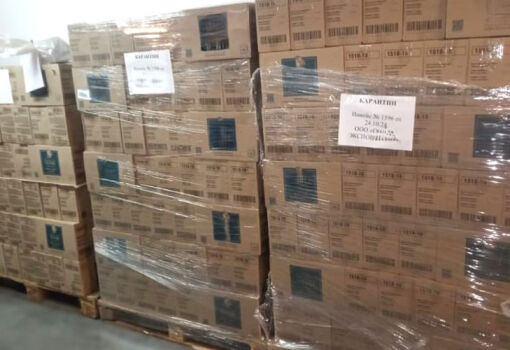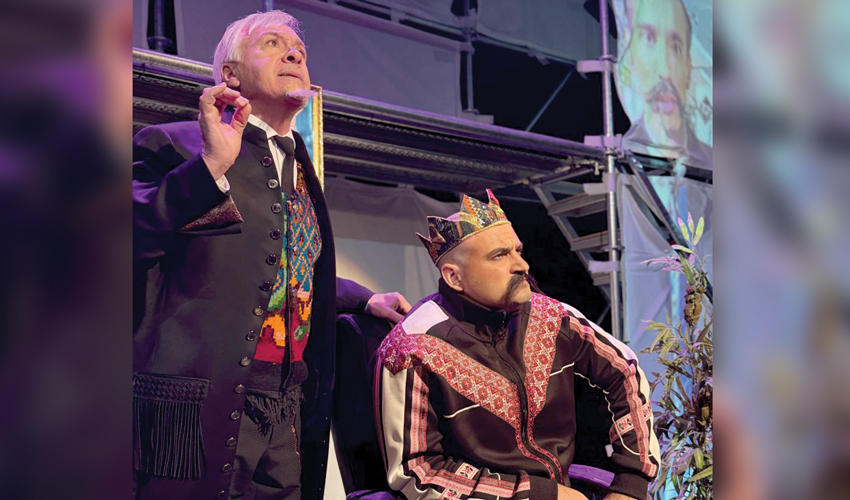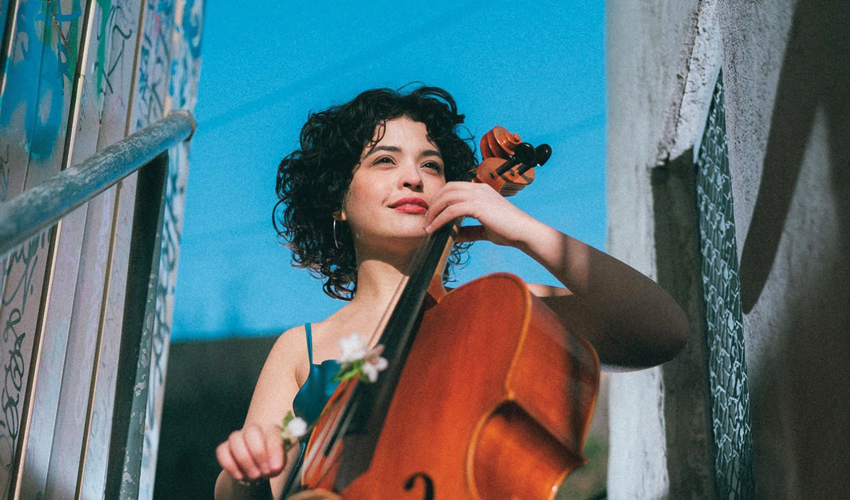
In essence, this competition is a cultural laboratory where young designers take their first professional steps. From sketch to material, from idea to stage, from conception to real industry. And in some cases – to the international level. This year’s winners will go to the Summer School at the Institut Français de la Mode, one of the key educational centers of European fashion.
The finals took place at Artcor, a space created for the development of creative industries. It is neither an exhibition hall nor a catwalk in the usual sense, but a living structure in which the process is more important than the facade. Here you can see how fashion is created – in its pure, unadorned form. That is why the competition is held here: in an atmosphere of openness, concentration and fair competition. Without unnecessary pathos, but with that inner tension that arises when not just clothes appear on the catwalk, but a clearly formulated idea expressed in a collection.
It is from this level – when fashion becomes a form of conversation, not just consumption – that cultural dialog begins. And in a broader sense, a conversation about the attention economy, about intellectual property, about a local industry capable of creating not only a product but also an idea. Competitions like NextGENERATION are not just a launching pad for young designers. It is a kind of diagnostics of the industry. We see what the fashion ecosystem is capable of if it is given not only the market, but also time, knowledge, and the opportunity to be heard.
The program is implemented under the curatorship of ZIPHOUSE Fashion Innovation Hub under the Tehnologiile Viitorului project, with the support of USAID, Sweden and the UK. The aim of the competition is not only to select talented designers, but also to develop their professional skills: the ability to work with a concept, design a collection, take into account technological and stylistic aspects, and interact with the industry.
At the first stage, designers submit applications with a package of materials: sketches, a moodboard and a description of the concept. Based on the results of the selection process, a group of participants is formed, with whom mentors and invited specialists work in the future. The work is based on dialog: during consultations, participants receive feedback, adjust ideas and gradually form a full-fledged collection consisting of five or more bows.
At the end of the six-month program, 13 young designers took to the final catwalk, each with their own collection, visual logic and professional motivation. These were not just sets of outfits, but personal projects structured in thought and form.
The competition is traditionally divided into two categories: ART and Ready-To-Wear. This division allows participants to choose a strategy of participation: from an experimental approach to the development of a practical collection. The ART category implies more free and conceptual work, where the emphasis is on visual expression. Ready-To-Wear, on the other hand, requires careful attention to wearability, construction and potential marketability. In both cases, the participants are required not just for aesthetics, but for logic and coherence: each collection must be coherent in idea, material and sequence.
At the end of the final show, the jury determined the winners in each category.
ARTcategory :
-
- 1st place – Alexander Rotaru
- 2nd place – Anna Slobodeniuc
- 3rd place – Marialina Efros
Ready-To-Wearcategory :
-
- 1st place – Anna Malygina
- 2nd place – Kristina Lewicki
- 3rd place – Alexey Sorokin
The designers who took the first and second places got the opportunity to study at the Summer School at Institut Français de la Mode in Paris – one of the leading educational centers of the European fashion industry. The finalists were also honored with prizes from the competition partners.
Alexandre Rotaru, winner of the ART category, presented a collection called “Prea târziu…” inspired by the poetry of Charles Baudelaire, images of Dante and the visual aesthetics of Mylène Farmer: “I wanted to recreate a story. The story of a soul on the brink of life and death after all the pleasures of earth. The collection includes seven images: the Herald of Death, Fear, Premonition, Death, Spirit, Body and… Soul. It is a story about accepting the inevitable, repenting and trying to redefine what seems insignificant in life – the soul.”
In the Ready-To-Wear category, Alexei Sorokin’s L’éclat collection attracted special attention of the jury, taking the third place. This is his second participation in NextGENERATION – and, according to him, more mature: “L’éclat is a story about inner light, which does not dazzle, but warms. The title translates from French as ‘radiance’, and it has everything I wanted to express: purity, simplicity, the personal. It’s not a flash, it’s not an effect – it’s a light that doesn’t require attention but is always felt.”
Other participants’ collections were also characterized by attention to detail and thoughtful storytelling. But the overall impression remained the same: there was meaningful work behind each collection. Not a visual gesture, but a carefully constructed statement, which the author went step by step towards.
If we look at the competition not as a show, but as a cross-section of design thinking, the visual language of the collections becomes one of the main sources of information. It is in the choice of fabric, in the structure of the image, in the length of the line and in the level of detail that the participants show how they think – and how they learn to translate the idea into form.
The 2025 collections showed that the visual language of young designers in Moldova is becoming more and more collected, structured, conscious. The clothes did not shout – they spoke.
Materials ranged from plastic to complex textures. Some collections used unconventional techniques of draping, fabric deformation, asymmetry. But it is important that technical experiments did not become an end in themselves. In most cases, the participants kept a balance between idea and execution.
The color palette remained within the limits of moderate expressiveness. Black, white, flesh tones, deep gray, green-gray and ash tones prevailed. Bright accents were used pointwise, not as a statement, but as a placement of semantic accents.
The visual composition of most of the collections was built up consistently. The images were not as a set of disparate bows, but as parts of a single structure. This shows the growth of professional training: the participants were not just creating clothes – they were formulating a modular visual text.
At the level of external perception, NextGENERATION may seem like a local contest for novice designers. But if you look deeper, it becomes clear: it is an engineered system that works for the long-term development of the fashion industry. It sets not only the format of training, but also the principles of organizing professional space.
Today, when creative industries are considered to be part of the knowledge economy, such projects are becoming increasingly important. They form an infrastructure in which young professionals do not just show themselves, but receive tools for sustainable presence in the profession: from understanding the processes to actually entering the market.
The support of international partners makes it possible to build such a model not on enthusiasm, but on an institutional level. This gives stability and long-term planning. The competition is not a point, but a link in the chain, where educational platforms, co-working spaces, workshops, sessions with experts, access to materials, markets, and internships are located side by side.
Another important aspect is the consolidation of the professional field. The competition makes visible not only designers, but also those who work with them: technologists, mentors, organizers, photographers, curators. In this context, a network emerges, where not only individual achievements are important, but also interaction. It’s not just a single success – it’s a process that creates an environment.
The NextGENERATION competition is not just a stage for young designers. It is a system through which we can measure the state of the local fashion industry: the level of preparation, the quality of ideas, the depth of development. It is a way to understand in which direction the profession is moving, who will shape it, and on what principles its future will be built.
Such initiatives are not just a cultural event. It is an investment in competence. And perhaps the main thing this competition teaches is respect for the process. Not fashion as a phenomenon, but fashion as work.
Attentive, painstaking, intellectual.













